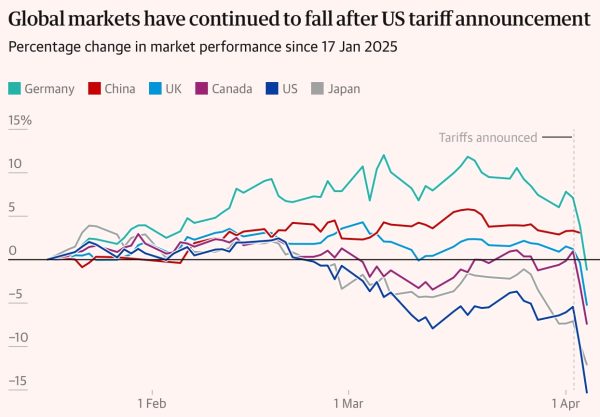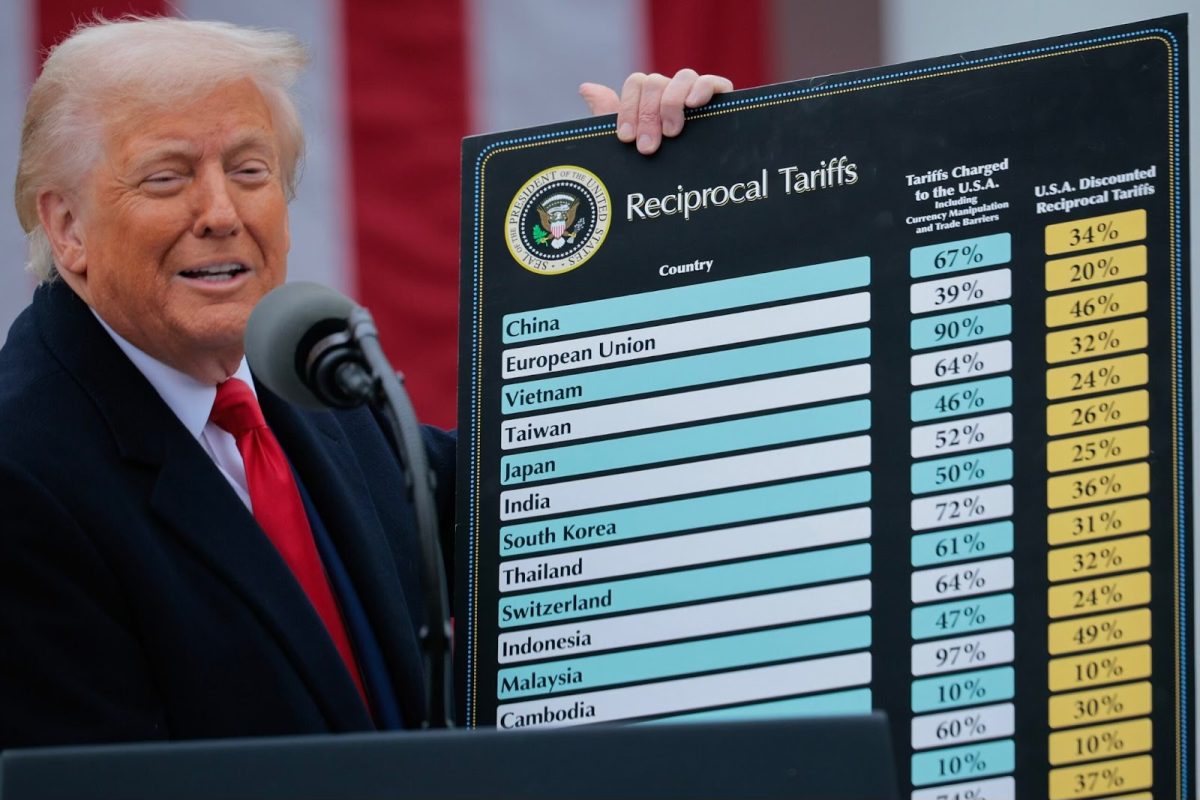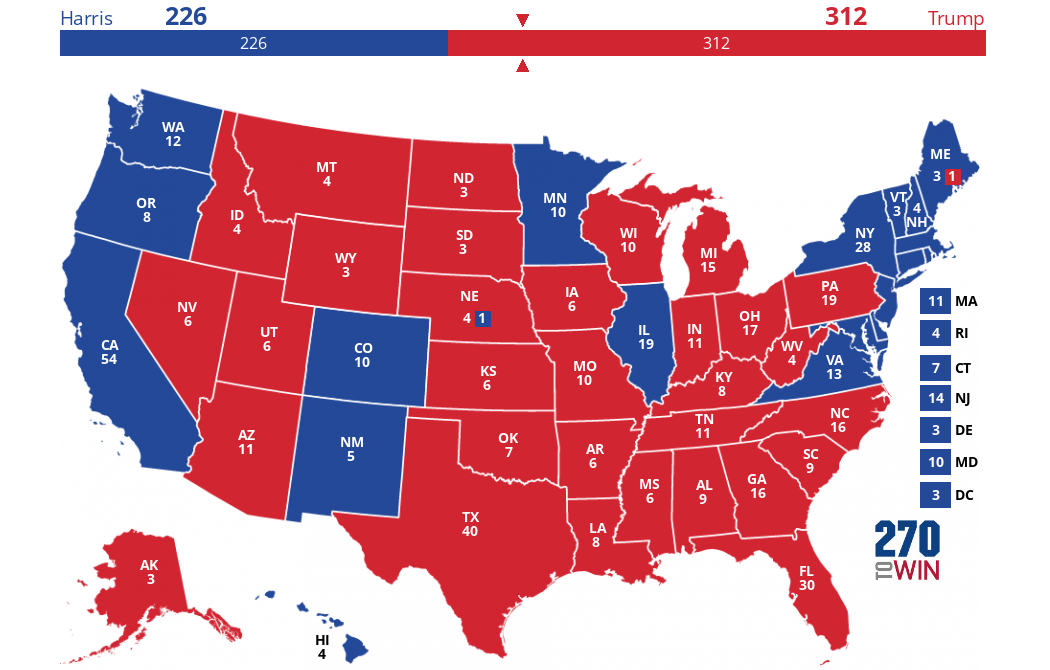What are Trump’s tariffs and what are his goals with them?
The US is at an economic crossroads – consumers want lower costs while businesses are aiming for greater domestic production. President Trump’s solution? Tariffs! Boasted as a magical economic solution, tariffs are put in place to tax foreign imports and effectively raise production and consumerism within a country to grow its economy. When used correctly, tariffs can proficiently boost American industries. However, Trump recently signed an executive order to apply a 10% tax on all imports as well as a 20% tariff on goods from the European Union, a 34% tariff on Chinese imports, and a 46% tariff on goods from Vietnam. With more tariffs expected to target certain industries, economists predict a recession with the stock market on the decline since the tariffs were enacted. Historically, the Smoot-Hawley Act, which put in place the highest tariff in US history, was widely considered a failure that was a major factor in aggravating the Great Depression. Predicted to be the highest tariff since the Smoot-Hawley era or potentially in all of US history, Trump’s executive order could have disastrous effects on the American economy. His overall aims are pointed towards building domestic manufacturing, using tariffs to lower income taxes, and ridding the US of deficit.
The targeting of tariffs
As previously mentioned, tariffs can be extremely effective if placed on the right industries. For instance, Trump recently implemented a reciprocal tariff on seafood, where the US imports 94% from foreign producers according to ABC News. Taxing foreigners here would make a great amount of sense because it will push foreign prices above local prices. Once the domestic market takes charge, businesses can compete amongst one another to create an American-driven seafood industry which effectively achieves the goal of the tariffs.
On the other hand, Trump has placed tariffs on plenty of markets with the same goal yet the reasoning doesn’t add up. Notably, he initiated a 25% tax on all cars shipped to America and his administration expected to place a tariff on auto parts in the coming weeks. Even though there is a similar goal of building the domestic industry, the taxing of foreign cars and parts is illogical. The idea is that cars will be too expensive for consumers if they are imported, so consumers will buy from American brands. The issue is that manufacturers import their parts from foreign countries, which will soon also be taxed. Eventually, the extra cost falls on the consumers. This has already began to manifest as the automobile industry has already seen problems with thousands of workers losing their jobs.

Helpful or harmful? Potential trade wars and their effects on consumers.
The goals of Trump’s tariffs are understandable – strengthen domestic production and generate revenue within the country to heighten the economy. However, the messy policies and lack of a clear cut plan leave a lot of room for worry about the future of both American and foreign economies. Early in his administration, Trump threatened our neighbors Canada and Mexico with high tariffs but didn’t apply them until months later which left foreign politicians guessing. More recently, Trump’s policies regarding China were retaliated against with China implementing a reciprocal tariff which is building into a trade war. Between the mix of tense economic relations and an uncertainty in President Trump’s future plans, it is bound to inflict rising prices and low confidence in the economy.
Additionally, it is important to think about how these tariffs will affect US consumers. It is highly likely our purchasing decisions will be influenced by Trump’s executive orders as according to economists, the taxing of goods will continue to fall on the common citizen. One interesting point is made in an article in The Guarding by Creon Butler, a leader of the global economy and finance program at Chatham House in London. Butler says, “You have a doughnut, where the US is an island surrounded by tariffs of 10-60%, while the rest of the world goes its own way,… you will have poorer quality, more expensive products, and international supply chains going elsewhere.” It’s interesting to wonder where consumers will benefit from all these extensive policies.
Foreign markets will also see the effects, especially those who are facing high tariff rates such as Laos, Cambodia, and Vietnam. Generally, the US isn’t as much of a factor in the worldwide economy as it used to be but countries will surely see a hit in certain sectors.
It is important that we are aware of the basics of Trump’s economic policies and how they connect to the past in order to make decisions that are beneficial for the future. It is still too early to tell where the administration’s tariff plans will be going but even as students in Radnor, our acknowledgement of the potential outcomes will help us plan for the future.








